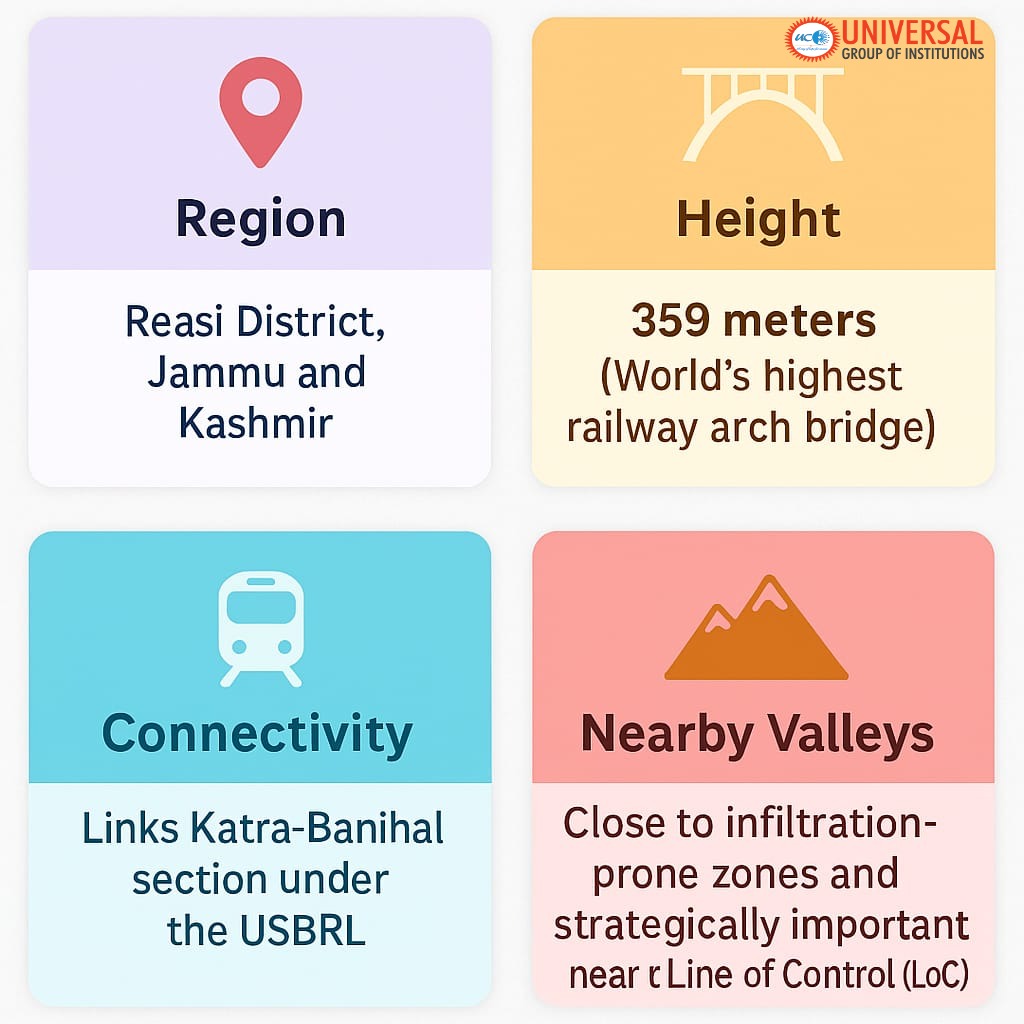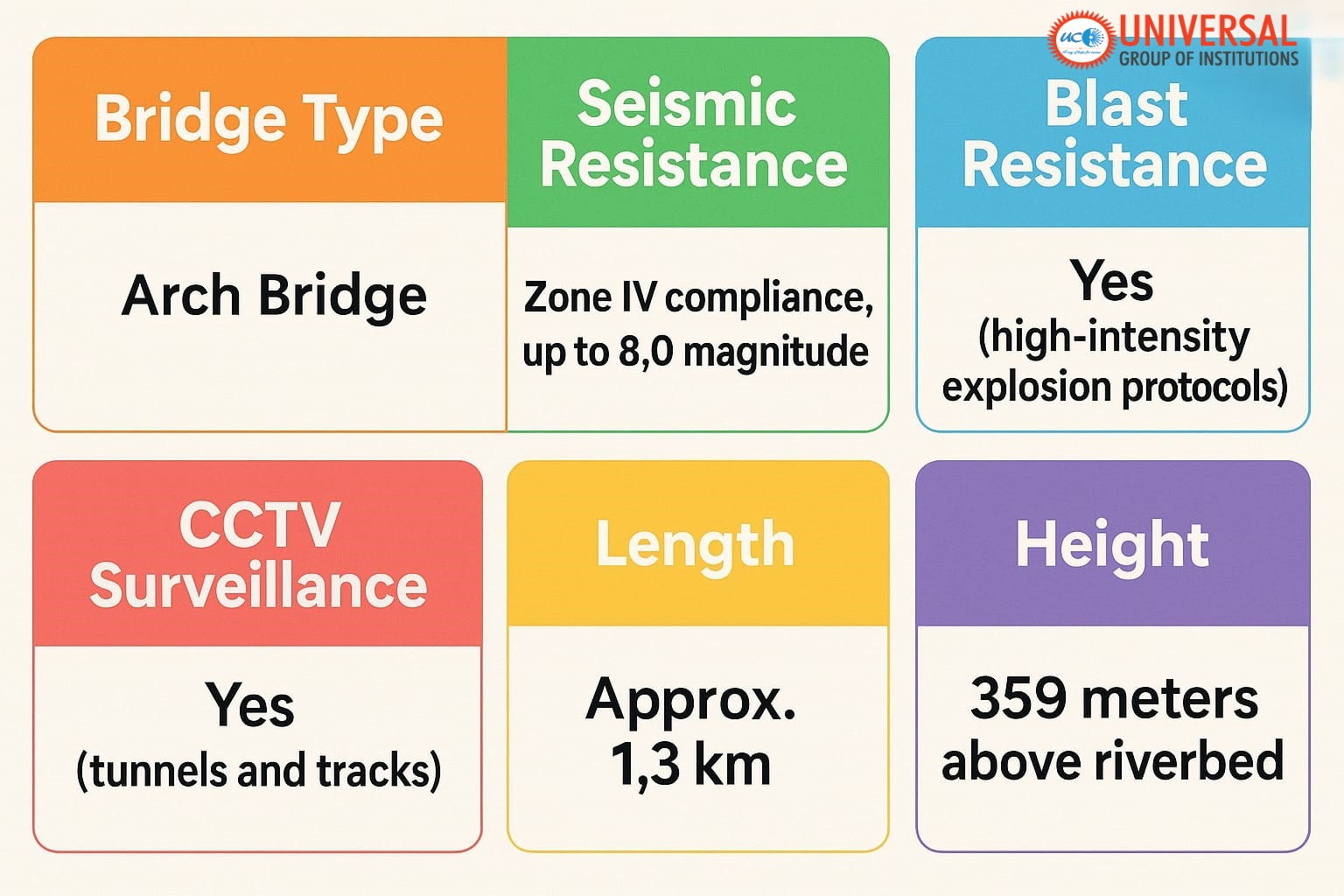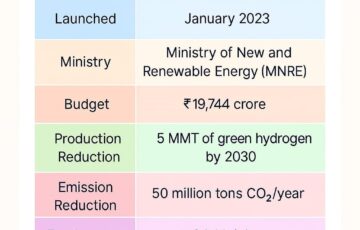Chenab Rail Bridge: Engineering Marvel with Strategic Importance for India
Chenab Rail Bridge: Engineering Marvel with Strategic Importance for India
On June 6, 2025, Prime Minister Narendra Modi is set to inaugurate the Chenab Rail Bridge, the world’s highest railway arch bridge and India’s longest railway bridge, located in the Reasi district of Jammu and Kashmir. This PM Modi inauguration marks a historic achievement for India’s infrastructure development and symbolizes a strategic milestone in integrating the Kashmir Valley with the national railway network. As an engineering marvel in Kashmir and the latest bridge in India, it also sends a strong message of national resolve and readiness in a geopolitically sensitive region, showcasing the post-Article 370 development initiatives and the expansion of the Indian Railways network. The strategic importance of the Chenab Bridge is evident in its role as a crucial link in this ambitious project.
What is the Chenab Rail Bridge?
The Chenab Rail Bridge, part of the ambitious Udhampur-Srinagar-Baramulla Rail Link (USBRL) project, is constructed over the Chenab River in the Pir Panjal range. It stands at a height of 359 meters, taller than the Eiffel Tower (approx. 324 meters). The bridge is an engineering feat executed by Indian Railways and is built to withstand severe seismic activity and hostile weather conditions. This technical triumph represents one of the most significant Indian Railways achievements in recent years, showcasing advanced bridge technology advancements and overcoming challenges such as geological instability in the region. As the latest bridge in India, it exemplifies the country’s commitment to cutting-edge infrastructure development, further underlining the strategic importance of the Chenab Bridge in the region’s development.
📍 Location Significance
- Region: Reasi District, Jammu and Kashmir
- Height: 359 meters (World’s highest railway bridge)
- Connectivity: Links Katra-Banihal section under the USBRL project, a crucial railway project in Kashmir
- Nearby Valleys: Close to infiltration-prone zones and strategically important areas near the Line of Control (LoC)
Strategic and Security Importance
The strategic importance of the Chenab Bridge cannot be overstated, as it plays a crucial role in enhancing India’s security and connectivity in the region:
- Enhanced Military Mobility
- Facilitates all-weather transportation of troops, artillery, and logistics.
- Reduces travel time from Delhi to Srinagar to just 13 hours by train, potentially by the Vande Bharat Express.
- Vital for maintaining border readiness in Jammu, Kashmir, and Ladakh.
- Cross-Border Security and Counter-Terror Operations
- Built with blast-resistant features, anti-sabotage technologies, and seismic resistance (up to 8.0 magnitude earthquakes – Seismic Zone IV).
- Enables quick deployment of forces during insurgency or external threats.
- Enhances India’s ability to maintain operational superiority in a high-risk conflict zone.
- Surveillance and Monitoring
- Equipped with round-the-clock CCTV surveillance on tracks and tunnels.
- Integrated with intelligence and counter-infiltration systems, especially near militant hotspots.
The strategic importance of the Chenab Bridge extends beyond its physical attributes, reinforcing India’s commitment to regional security and development. Its role in enhancing military mobility and cross-border security underscores the Chenab Bridge’s strategic value in the region.
Symbolism and Strategic Messaging
The strategic importance of the Chenab Bridge extends beyond its physical attributes:
- Acts as a strong visual and infrastructural symbol of India’s assertion in Kashmir.
- Reinforces India’s national security infrastructure presence in sensitive terrain — akin to the Border Roads Organization’s role in high-altitude road projects.
- The inauguration shortly after Operation Sindoora strengthens the narrative of national resolve and internal security preparedness.
- Sends a message of technological prowess and state control in conflict zones.
The Chenab Bridge’s strategic importance is further emphasized by its role as a symbol of India’s commitment to development and security in the region.
Engineering & Safety Features
The Chenab Bridge construction faced numerous engineering challenges in mountainous regions, showcasing India’s expertise in high-altitude bridge engineering. The bridge’s arch design is a testament to engineering innovation, incorporating various bridge safety measures to ensure its longevity and reliability.
|
Feature |
Details |
|
Bridge Type |
Arch Bridge |
|
Seismic Resistance |
Zone IV compliance, up to 8.0 magnitude |
|
Blast Resistance |
Yes (high-intensity explosion protocols) |
|
CCTV Surveillance |
Yes (tunnels and tracks) |
|
Length |
Approx. 1.3 km |
|
Height |
359 meters above riverbed |
|
Wind Resistance |
Designed to withstand high-velocity winds |
The Chenab Bridge design features incorporate cutting-edge technology and high-strength materials to ensure safety and durability in this challenging terrain. The use of cable-crane technology during construction further demonstrates the advanced engineering techniques employed in this project, solidifying its status as the latest bridge in India to showcase such innovation. These features contribute significantly to the strategic importance of the Chenab Bridge, ensuring its resilience in a sensitive area.
Part of USBRL Project
The Chenab Rail Bridge is a crucial component of the 272-km USBRL project, one of the most significant strategic railway projects in recent times. The USBRL project significance lies in its potential to transform the region’s connectivity and economic landscape. Long delayed due to topographical and security challenges, it represents a major step in overcoming connectivity challenges in the region and expanding the Indian Railways network.
Once completed, this railway project in Kashmir will enable seamless rail connectivity from Udhampur to Baramulla, transforming mobility, logistics, and socio-economic integration in the region. This improvement in Jammu and Kashmir connectivity is expected to have a substantial Chenab Bridge economic impact on the area, including employment generation, boost to local industries, and potential improvements in medical infrastructure and healthcare access.
Another key component of the USBRL project is the Anji Bridge, which complements the Chenab Bridge in enhancing the overall railway network in the region. These developments, along with ongoing highway upgrades, demonstrate a comprehensive approach to infrastructure improvement in Jammu and Kashmir, further highlighting the strategic importance of the Chenab Bridge in the broader context of regional development.
Relevance for Competitive Exams
Prelims Pointers:
- Tallest railway bridge in the world: Chenab Rail Bridge
- Located in: Reasi, Jammu & Kashmir
- Part of: USBRL Project
- Height: 359 meters above Chenab River
- Seismic Zone: Zone IV
Mains Context:
- Discuss the strategic and infrastructural significance of mega projects like the Chenab Rail Bridge in enhancing national security and regional development.
- Analyze the role of infrastructure in cross-border security and border management strategies, with specific reference to the strategic importance of the Chenab Bridge.
Conclusion
The Chenab Rail Bridge is more than just a transport project. It is a symbol of India’s engineering excellence, strategic foresight, and national integration efforts in Jammu and Kashmir. For a region long mired in geopolitical and developmental challenges, this bridge signifies a turning point — connecting not just land, but aspirations. As a key component of India’s infrastructure development initiatives, it promises to boost Kashmir Valley connectivity, potentially transforming the economic landscape of the region.
The successful completion of this project underscores the nation’s commitment to overcoming geographical and security challenges, paving the way for progress and prosperity in this strategically vital region. Moreover, the Chenab Bridge tourism potential is significant, as it is expected to become a major attraction, offering breathtaking views and boosting the local tourism industry. This tourism boost, coupled with improved connectivity through the expanded Indian Railways network and highway upgrades, is likely to create a ripple effect of economic growth across various sectors in Jammu and Kashmir, including potential enhancements to medical infrastructure and healthcare services.
In conclusion, the strategic importance of the Chenab Bridge cannot be overstated. It serves as a critical link in India’s infrastructure, security, and development plans for the region, symbolizing the nation’s resolve and capability in executing complex projects in challenging terrains. The bridge’s multifaceted impact on military mobility, economic development, and national integration underscores its significance as a cornerstone of India’s strategic initiatives in Jammu and Kashmir.











